 中1英語
中1英語
 中1英語
中1英語
Lesson8-2 NT Stage1 3rd Edition【シュン・ヒノハラがていねいに解説】

単元:
#英語(中学生)#中1英語#一般動詞(1・2人称)(肯定文・否定文・疑問文)#一般動詞(3人称・単数)(肯定文・否定文・疑問文)
教材:
#NT ENGLISH SERIES#Third Edition Stage1#Lesson8#中高教材
指導講師:
理数個別チャンネル
問題文全文(内容文):
今回は8-2 過去時制における一般動詞の疑問文と否定文についての解説です。
この動画を見る
今回は8-2 過去時制における一般動詞の疑問文と否定文についての解説です。
Lesson6-3 NT Stage1 3rd Edition【しまだじろうがていねいに解説】

単元:
#英語(中学生)#英語(高校生)#英文法#中1英語#中2英語#文の種類#助動詞#命令文、否定の命令文、ていねいな命令文、Let's~.の文、あいさつ#canの文(肯定文・否定文・疑問文)#can、could、be able to、may、must、have to、should、助動詞を使った表現#命令文、Let's~、Don't~、命令文, and(or)~の文
教材:
#NT ENGLISH SERIES#Third Edition Stage1#Lesson6#中高教材
指導講師:
理数個別チャンネル
問題文全文(内容文):
Lesson6-1のcanの肯定文と否定文の復習から行い、
今回Lesson6-2の内容である、
・canの疑問文
・canの疑問文の注意点(can youの使い方)
・canの疑問詞疑問文
・be動詞の命令文
・be動詞の否定の命令文
をていねいに教えます!
この動画を見る
Lesson6-1のcanの肯定文と否定文の復習から行い、
今回Lesson6-2の内容である、
・canの疑問文
・canの疑問文の注意点(can youの使い方)
・canの疑問詞疑問文
・be動詞の命令文
・be動詞の否定の命令文
をていねいに教えます!
Lesson6-3 ニュートレジャー Stage1 3rd Edition【しまだじろうがていねいに解説】
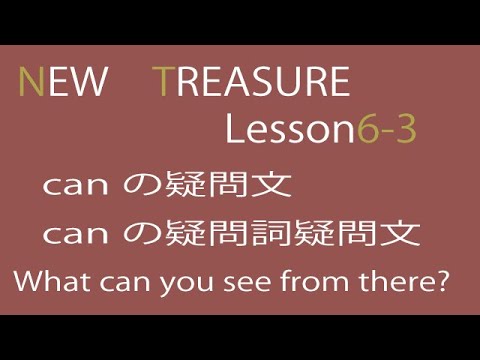
単元:
#英語(中学生)#中1英語#canの文(肯定文・否定文・疑問文)
指導講師:
理数個別チャンネル
問題文全文(内容文):
Lesson6-1のcanの肯定文と否定文の復習から行い、
今回Lesson6-2の内容である、
・canの疑問文
・canの疑問文の注意点(can youの使い方)
・canの疑問詞疑問文
・be動詞の命令文
・be動詞の否定の命令文
をていねいに教えます!
この動画を見る
Lesson6-1のcanの肯定文と否定文の復習から行い、
今回Lesson6-2の内容である、
・canの疑問文
・canの疑問文の注意点(can youの使い方)
・canの疑問詞疑問文
・be動詞の命令文
・be動詞の否定の命令文
をていねいに教えます!
Lesson4-2 NT Stage1 3rd Edition【岡ちゃん先生がていねいに解説】

単元:
#英語(中学生)#中1英語#形容詞・副詞#一般動詞(3人称・単数)(肯定文・否定文・疑問文)
教材:
#NT ENGLISH SERIES#Third Edition Stage1#Lesson4#中高教材
指導講師:
理数個別チャンネル
問題文全文(内容文):
3単現の否定文、疑問文
この動画を見る
3単現の否定文、疑問文
Lesson4-2 ニュートレジャー Stage1 3rd Edition【岡ちゃん先生がていねいに解説】
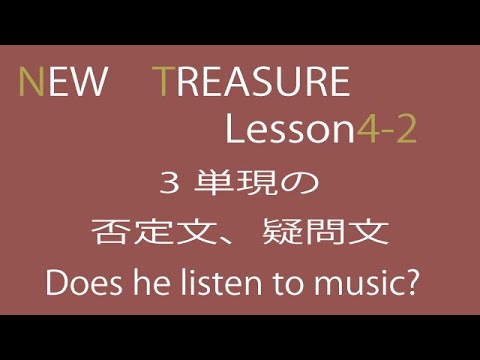
単元:
#英語(中学生)#中1英語#一般動詞(3人称・単数)(肯定文・否定文・疑問文)
指導講師:
理数個別チャンネル
問題文全文(内容文):
3単現の否定文、疑問文に関して解説していきます.
この動画を見る
3単現の否定文、疑問文に関して解説していきます.
Lesson5-3 NT Stage1 3rd Edition【YAKISOBA先生がていねいに解説】

単元:
#英語(中学生)#中1英語#Where、Which、Howで始まる疑問文
教材:
#NT ENGLISH SERIES#Third Edition Stage1#Lesson5#中高教材
指導講師:
理数個別チャンネル
問題文全文(内容文):
N.T.のLesson5-3の解説です。
この動画を見る
N.T.のLesson5-3の解説です。
Lesson5-3 ニュートレジャー Stage1 3rd Edition【YAKISOBA先生がていねいに解説】
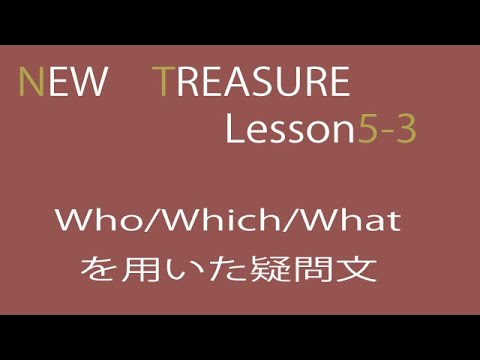
単元:
#英語(中学生)#中1英語#This is~. That is~. What is~? の文(肯定文・否定文・疑問文)#He(She) is~. Who is~?の文(肯定文・否定文・疑問文)#代名詞の目的格、所有代名詞、Whose~?と答え方#Where、Which、Howで始まる疑問文
指導講師:
理数個別チャンネル
問題文全文(内容文):
ニュートレジャー Stage1 3rd EditionのLesson5-3の解説です。
この動画を見る
ニュートレジャー Stage1 3rd EditionのLesson5-3の解説です。
Lesson1-2 NT Stage1 3rd Edition【岡ちゃん先生がていねいに解説】

単元:
#英語(中学生)#中1英語#This is~. That is~. What is~? の文(肯定文・否定文・疑問文)
教材:
#NT ENGLISH SERIES#Third Edition Stage1#Lesson1#中高教材
指導講師:
理数個別チャンネル
問題文全文(内容文):
this that の文、使い方
この動画を見る
this that の文、使い方
Lesson1-2 ニュートレジャー Stage1 3rd Edition【岡ちゃん先生がていねいに解説】
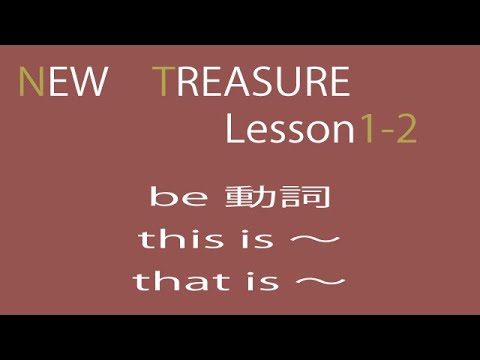
単元:
#英語(中学生)#中1英語#中2英語#This is~. That is~. What is~? の文(肯定文・否定文・疑問文)#be動詞の過去形(肯定文・否定文・疑問文)
指導講師:
理数個別チャンネル
問題文全文(内容文):
this that の文、使い方に関して解説していきます.
この動画を見る
this that の文、使い方に関して解説していきます.
Lesson4-1 ニュートレジャー Stage1 3rd Edition【岡ちゃん先生がていねいに解説】
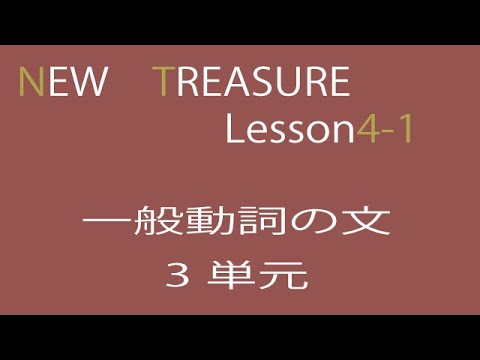
単元:
#英語(中学生)#中1英語#一般動詞(1・2人称)(肯定文・否定文・疑問文)#一般動詞(3人称・単数)(肯定文・否定文・疑問文)
指導講師:
理数個別チャンネル
問題文全文(内容文):
一般動詞の文を解説します
この動画を見る
一般動詞の文を解説します
Lesson4-1 NT Stage1 3rd Edition【岡ちゃん先生がていねいに解説】

単元:
#英語(中学生)#中1英語#一般動詞(3人称・単数)(肯定文・否定文・疑問文)
教材:
#NT ENGLISH SERIES#Third Edition Stage1#Lesson4#中高教材
指導講師:
理数個別チャンネル
問題文全文(内容文):
一般動詞の文を解説します
この動画を見る
一般動詞の文を解説します
Lesson5-2 NT Stage1 3rd Edition【YAKISOBA先生がていねいに解説】

単元:
#英語(中学生)#中1英語#Where、Which、Howで始まる疑問文
教材:
#NT ENGLISH SERIES#Third Edition Stage1#Lesson5#中高教材
指導講師:
理数個別チャンネル
問題文全文(内容文):
N.T. SERIES Third Edition Stage1 Lesson 5-1のKey Point解説
この動画を見る
N.T. SERIES Third Edition Stage1 Lesson 5-1のKey Point解説
Lesson5-1 NT Stage1 3rd Edition【YAKISOBA先生がていねいに解説】

単元:
#英語(中学生)#中1英語#代名詞の目的格、所有代名詞、Whose~?と答え方
教材:
#NT ENGLISH SERIES#Third Edition Stage1#Lesson5#中高教材
指導講師:
理数個別チャンネル
問題文全文(内容文):
N.T. SERIES Third Edition Stage1 Lesson 5-1のKey Point解説
この動画を見る
N.T. SERIES Third Edition Stage1 Lesson 5-1のKey Point解説
Lesson2-2 ニュートレジャー Stage1 3rd Edition 【ダスカロイがていねいに解説】

単元:
#英語(中学生)#中1英語#This is~. That is~. What is~? の文(肯定文・否定文・疑問文)
指導講師:
理数個別チャンネル
問題文全文(内容文):
ニュートレジャー Stage1 3rd Edition Lesson2-2のKeyPoint例文解説です。
この動画を見る
ニュートレジャー Stage1 3rd Edition Lesson2-2のKeyPoint例文解説です。
Lesson2-2 NT Stage1 3rd Edition 【ダスカロイがていねいに解説】

単元:
#英語(中学生)#中1英語#This is~. That is~. What is~? の文(肯定文・否定文・疑問文)
教材:
#NT ENGLISH SERIES#Third Edition Stage1#Lesson2#中高教材
指導講師:
理数個別チャンネル
問題文全文(内容文):
N.T. ENGLISH SERIES Third Edition Stage1 Lesson2-2のKeyPoint例文解説です。
疑問詞whatの使い方
この動画を見る
N.T. ENGLISH SERIES Third Edition Stage1 Lesson2-2のKeyPoint例文解説です。
疑問詞whatの使い方
Lesson2-1 NT Stage1 3rd Edition【ダスカロイがていねいに解説】

単元:
#英語(中学生)#中1英語#He(She) is~. Who is~?の文(肯定文・否定文・疑問文)
教材:
#NT ENGLISH SERIES#Third Edition Stage1#Lesson2#中高教材
指導講師:
理数個別チャンネル
問題文全文(内容文):
N.T. ENGLISH SERIES Third Edition Stage1 Lesson2-1のKeyPoint例文解説です。
この動画を見る
N.T. ENGLISH SERIES Third Edition Stage1 Lesson2-1のKeyPoint例文解説です。
Lesson2-1 ニュートレジャー Stage1 3rd Edition【ダスカロイがていねいに解説】
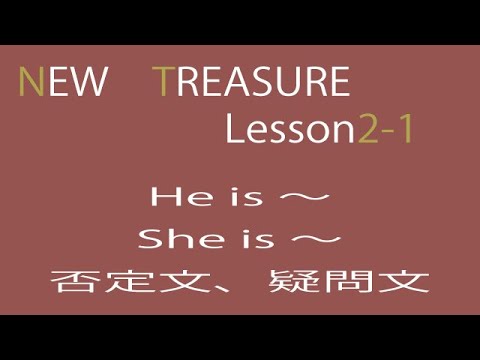
単元:
#英語(中学生)#中1英語#He(She) is~. Who is~?の文(肯定文・否定文・疑問文)
指導講師:
理数個別チャンネル
問題文全文(内容文):
ニュートレジャー Stage1 3rd Edition Lesson2-1のKeyPoint例文解説です。
この動画を見る
ニュートレジャー Stage1 3rd Edition Lesson2-1のKeyPoint例文解説です。
Lesson6-2 NT Stage1 3rd Edition【しまだじろうがていねいに解説】

単元:
#英語(中学生)#英語(高校生)#英文法#品詞と文型、句と節#中1英語#canの文(肯定文・否定文・疑問文)
教材:
#NT ENGLISH SERIES#Third Edition Stage1#Lesson6#中高教材
指導講師:
理数個別チャンネル
問題文全文(内容文):
Lesson6-2は助動詞canの使い方と、自動詞と他動詞についてです。助動詞って何?自動詞と他動詞って何?基礎からわかりやすく解説!また、テキストに出て来る単語のチェックや動詞の使い方なども、ていねいに解説しているので基礎から応用までしっかり理解しましょう!
この動画を見る
Lesson6-2は助動詞canの使い方と、自動詞と他動詞についてです。助動詞って何?自動詞と他動詞って何?基礎からわかりやすく解説!また、テキストに出て来る単語のチェックや動詞の使い方なども、ていねいに解説しているので基礎から応用までしっかり理解しましょう!
Lesson6-1 NT Stage1 3rd Edition【まどか's Englishがていねいに解説】

単元:
#英語(中学生)#英語(高校生)#会話文・イディオム・構文・英単語#中1英語#中2英語#会話文#命令文、否定の命令文、ていねいな命令文、Let's~.の文、あいさつ#命令文、Let's~、Don't~、命令文, and(or)~の文
教材:
#NT ENGLISH SERIES#Third Edition Stage1#Lesson6#中高教材
指導講師:
理数個別チャンネル
問題文全文(内容文):
6-1文法解説です
この動画を見る
6-1文法解説です
Lesson3-3 NT Stage1 3rd Edition【シュン・ヒノハラがていねいに解説】

単元:
#英語(中学生)#英語(高校生)#英文法#中1英語#名詞・冠詞・代名詞#代名詞の目的格、所有代名詞、Whose~?と答え方
教材:
#NT ENGLISH SERIES#Third Edition Stage1#Lesson3#中高教材
指導講師:
理数個別チャンネル
問題文全文(内容文):
3-3の解説動画です。人称代名詞(we, theyなど)について解説しています。
この動画を見る
3-3の解説動画です。人称代名詞(we, theyなど)について解説しています。
【英語】Lesson3-3 Stage1 【シュン・ヒノハラがていねいに解説】

単元:
#英語(中学生)#中1英語#名詞・代名詞の複数形、How many~?、someとany
指導講師:
理数個別チャンネル
問題文全文(内容文):
3-3の解説動画です。人称代名詞(we, theyなど)について解説しています。
この動画を見る
3-3の解説動画です。人称代名詞(we, theyなど)について解説しています。
Lesson3-2 NT Stage1 3rd Edition【シュン・ヒノハラがていねいに解説】

単元:
#英語(中学生)#英語(高校生)#英文法#中1英語#文の種類#一般動詞(1・2人称)(肯定文・否定文・疑問文)#名詞・代名詞の複数形、How many~?、someとany
教材:
#NT ENGLISH SERIES#Third Edition Stage1#Lesson3#中高教材
指導講師:
理数個別チャンネル
問題文全文(内容文):
3-2についての解説動画です。疑問詞疑問文、someとany、複数形、冠詞などについての解説をしています。
この動画を見る
3-2についての解説動画です。疑問詞疑問文、someとany、複数形、冠詞などについての解説をしています。
【英語】Lesson3-2 Stage1 【シュン・ヒノハラがていねいに解説】
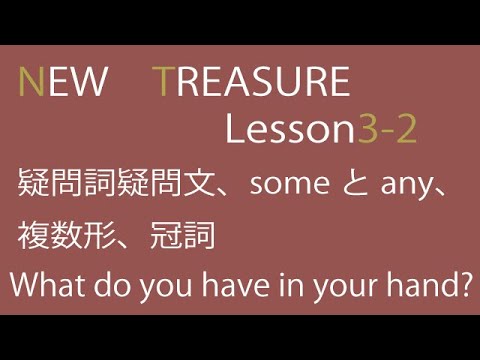
単元:
#英語(中学生)#中1英語#I am~. You are~.の文(肯定文・否定文・疑問文)#This is~. That is~. What is~? の文(肯定文・否定文・疑問文)#名詞・代名詞の複数形、How many~?、someとany
指導講師:
理数個別チャンネル
問題文全文(内容文):
疑問詞疑問文、someとany、複数形、冠詞などについての解説をしています。
この動画を見る
疑問詞疑問文、someとany、複数形、冠詞などについての解説をしています。
Lesson3-1 NT Stage1 3rd Edition【シュン・ヒノハラがていねいに解説】

単元:
#英語(中学生)#中1英語#一般動詞(1・2人称)(肯定文・否定文・疑問文)
教材:
#NT ENGLISH SERIES#Third Edition Stage1#Lesson3#中高教材
指導講師:
理数個別チャンネル
問題文全文(内容文):
一般動詞についての解説動画です。
この動画を見る
一般動詞についての解説動画です。
【英語】Lesson3-1 Stage1 【シュン・ヒノハラがていねいに解説】
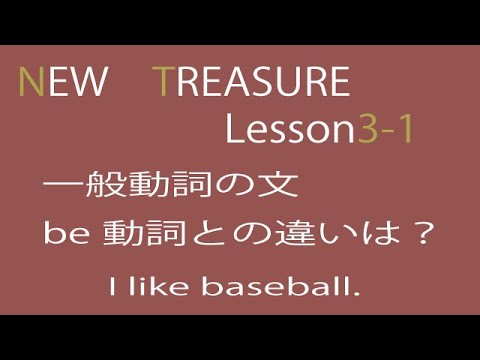
単元:
#英語(中学生)#中1英語#一般動詞(1・2人称)(肯定文・否定文・疑問文)#一般動詞(3人称・単数)(肯定文・否定文・疑問文)
指導講師:
理数個別チャンネル
問題文全文(内容文):
一般動詞についての解説動画です。
この動画を見る
一般動詞についての解説動画です。
【英語】私立高校入試の誤文訂正3

単元:
#英語(中学生)#英語(高校生)#英文法#会話文・イディオム・構文・英単語#英文解釈#構文#中1英語#中3英語#分詞・分詞構文#一般動詞(3人称・単数)(肯定文・否定文・疑問文)#分詞(現在分詞の形容詞的用法、過去分詞の形容詞的用法)
指導講師:
理数個別チャンネル
問題文全文(内容文):
以下の文には誤りがあるので、訂正しましょう。
① When I was watching the World Cup match,
I was so exciting that I threw everything I had to
the soccer field. (慶應義塾高校 2019)
② The difference between people who succeed and those
who do not lie in their attitude toward their work.
(慶應義塾高校 2013)
※ 直した上で、和訳も考えてみましょう!
この動画を見る
以下の文には誤りがあるので、訂正しましょう。
① When I was watching the World Cup match,
I was so exciting that I threw everything I had to
the soccer field. (慶應義塾高校 2019)
② The difference between people who succeed and those
who do not lie in their attitude toward their work.
(慶應義塾高校 2013)
※ 直した上で、和訳も考えてみましょう!
【英語】【後置修飾】50音順に文法用語を解説する⑫

単元:
#英語(中学生)#英語(高校生)#英文法#品詞と文型、句と節#中1英語#中3英語#分詞・分詞構文#関係代名詞・関係副詞・複合関係詞#形容詞・副詞#前置詞#形容詞・副詞#分詞(現在分詞の形容詞的用法、過去分詞の形容詞的用法)
指導講師:
理数個別チャンネル
問題文全文(内容文):
今回は後置修飾について解説します!
この動画を見る
今回は後置修飾について解説します!
【英語】私立高校入試の誤文訂正1

単元:
#英語(中学生)#英語(高校生)#英文法#中1英語#形容詞・副詞#形容詞・副詞#高校入試過去問(英語)
指導講師:
理数個別チャンネル
問題文全文(内容文):
① He was possible to speak more than three
languages when he was ten. (市川 2011)
② I watched a horror movie with my brother.
I enjoyed it a lot, but my brother didn't.
It was so afraid. (渋谷教育学園幕張 2014)
③ Tsujii Nobuyuki is a world-famous pianist.
His eyes are blind. (愛光 2019)
この動画を見る
① He was possible to speak more than three
languages when he was ten. (市川 2011)
② I watched a horror movie with my brother.
I enjoyed it a lot, but my brother didn't.
It was so afraid. (渋谷教育学園幕張 2014)
③ Tsujii Nobuyuki is a world-famous pianist.
His eyes are blind. (愛光 2019)
英語の複数形は難しい #shorts

単元:
#英語(中学生)#中1英語#名詞・代名詞の複数形、How many~?、someとany
指導講師:
Morite2 English Channel
問題文全文(内容文):
複数形にした際に不規則変化する、特殊な名詞を解説します。
発音にも注意しましょう!
この動画を見る
複数形にした際に不規則変化する、特殊な名詞を解説します。
発音にも注意しましょう!
【英語】Lesson1 問題演習 Stage1【岡ちゃん先生がていねいに解説】
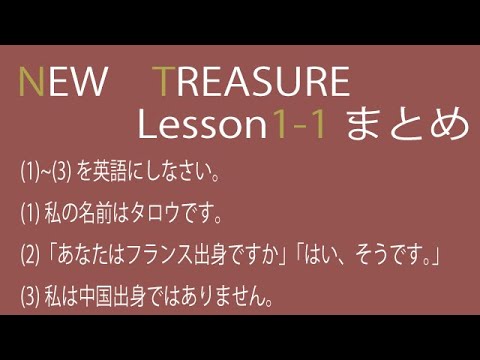
単元:
#英語(中学生)#中1英語
指導講師:
理数個別チャンネル
問題文全文(内容文):
■(1)~(3)を英語にしなさい。
(1)私の名前はタロウです。(2)「あなたはフランス出身ですか」「はい、そうです。」(3)私は中国出身ではありません。
■(4)(5)の英文の誤りを訂正しなさい。
(4)私は日本出身です。 I’m not from japan.(5)「あなたはユミですか」「いいえ、違います。」Are You yumi. No you are not.
この動画を見る
■(1)~(3)を英語にしなさい。
(1)私の名前はタロウです。(2)「あなたはフランス出身ですか」「はい、そうです。」(3)私は中国出身ではありません。
■(4)(5)の英文の誤りを訂正しなさい。
(4)私は日本出身です。 I’m not from japan.(5)「あなたはユミですか」「いいえ、違います。」Are You yumi. No you are not.
